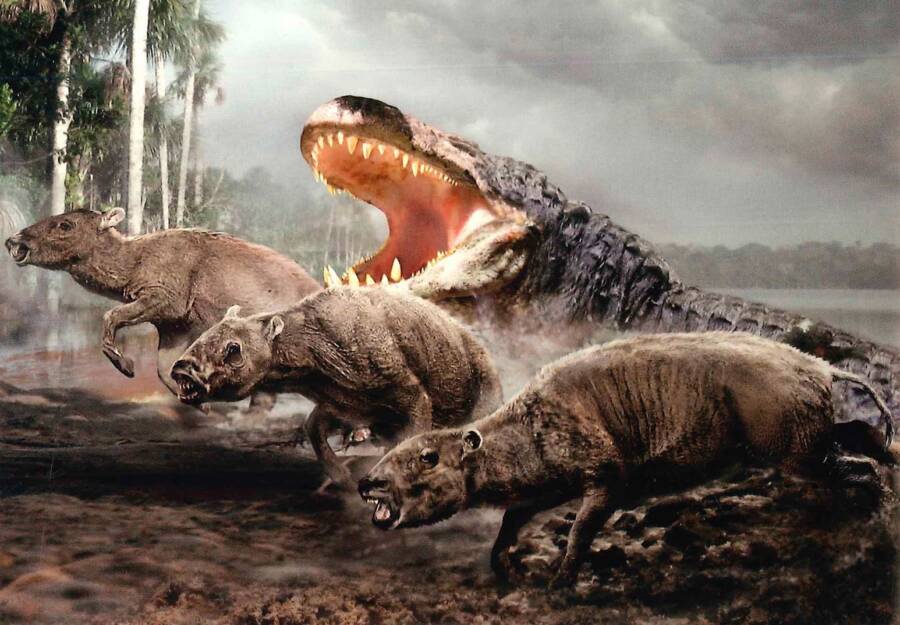In this blog I will be highlighting debatably the largest and most impressive of the ancient crocodilians, the Purussaurus.

Purussaurus is actually a giant species of Caiman, which are crocodilians in the same family as alligators. Many species of caiman still exist today, but none that resemble this massive animal. The normal length for this species was likely around 35 feet long, with some specimens being estimated to be over 40 feet long and 18,000 pounds, making Purussaurus twice the length and weight of the largest modern crocodiles.


The skull of this animal could be around 5 feet long on its own, and was also one of the most distinctive features of this animal when compared to similar species due to its shape. The blocky, rounded skull and perfectly flat top of the head is not a feature seen in any modern crocodilians, though its vaguely similar to the rounded tips of alligator snouts.
This animal lived during the Miocene period, going extinct only 5 million years ago, in central South America, where most caiman still reside today. It was doubtlessly the top predator of its wetland ecosystem, preying on anything smaller than itself, including other crocodilians as well as the giant sloths which inhabited the same area. It had the strongest bite force of any four-legged animal so far known, able to produce over 15,000 pounds of force, which is about twice the bite force of a great white shark. It is also believed to be able to swim at the same speed as modern crocodiles, which is about 16 mph at full speed.
As is the case with any massive animal species, Purussaurus likely went extinct due to climate change. When the environment changes in a given ecosystem, smaller animals are able to move or adapt more easily if necessary, whereas larger animals such as this are immobile and much less adaptable to change as a result. This is probably why smaller crocodile species have survived since the age of the dinosaurs, while massive species such as Purussaurus are only around for relatively short periods of time. Larger animals also have much smaller population densities, so individual deaths have a much greater impact on the welfare of the entire species. This is why elephants are in such danger of extinction, because individual deaths can lead to an exponential decline in population.

One of the things I find most interesting about this species is that it was not especially unique, as there were many species in other time periods that closely rivaled its size. Crocodyliforms such as this have existed in an incredible range of variety throughout the history of the Earth, and modern alligators, caimans, gharials, and crocodiles represent a very narrow view of what once lived here. Purussaurus is merely the one I find most interesting, but there are have been many that walked on long legs like horses, ate only plants, or had whale-like mouths, and it is fascinating to me to think that if evolution had been slightly shifted in one way or the other, we could be coexisting with any one of them. It almost makes the crocodyliforms we know today seem boring by comparison.
Sources:
https://allthatsinteresting.com/purussaurus
http://www.prehistoric-wildlife.com/species/p/purussaurus.html
This was another super interesting blog. It’s hard to grasp how large animals such as the Purussaurus were. I liked the graphic showing the comparisons between the different sizes of the animals and humans. It really shows just how large the Purussaurus is compared to the other prehistoric crocodilians. The bite force is also very impressive. It is also very interesting that climate change is the most likely cause of their extinction, with the smaller animals more likely to survive. I’m excited to read more!
I really enjoyed reading this post, Matt! It’s fascinating to learn about prehistoric creatures like Purussaurus and the unique adaptations they developed to survive in their environment. The discovery of this species provides valuable insights into the natural history of our planet and the evolution of reptiles.